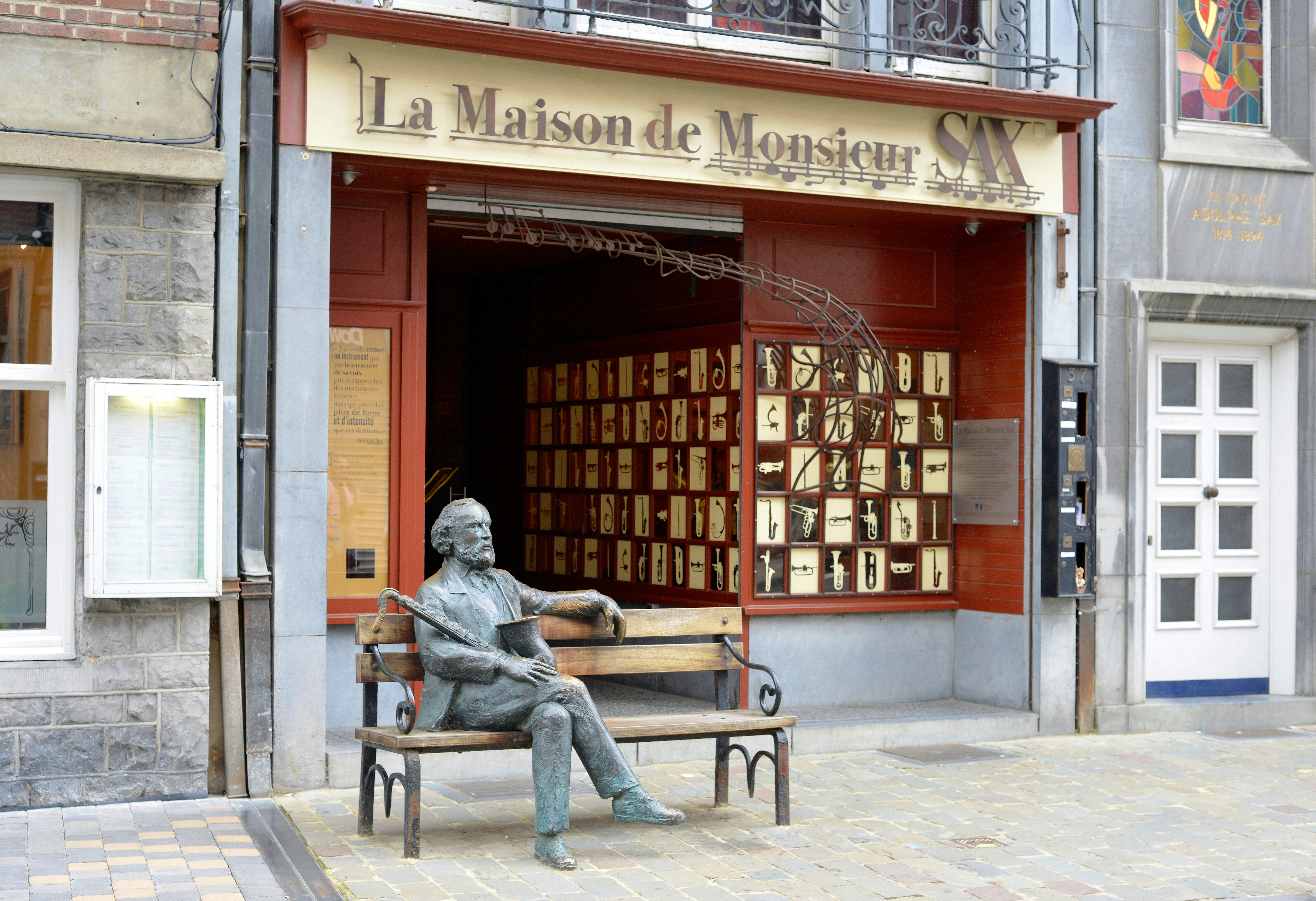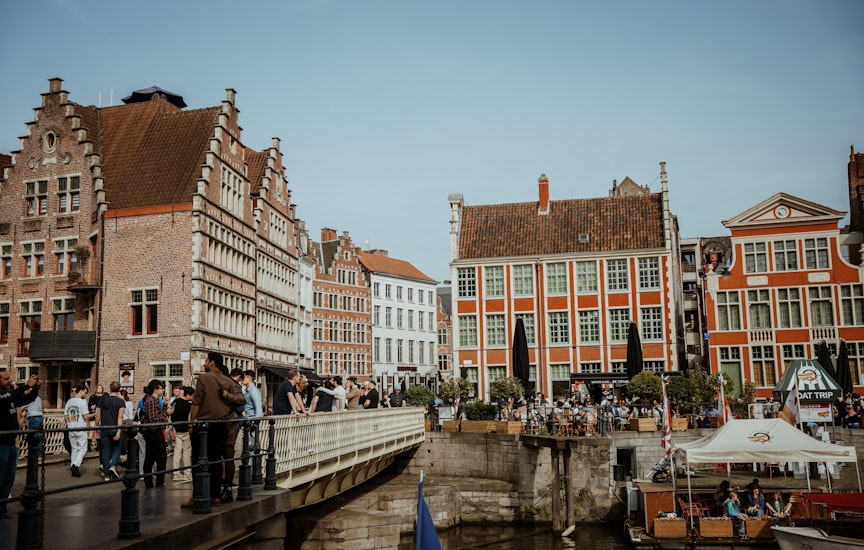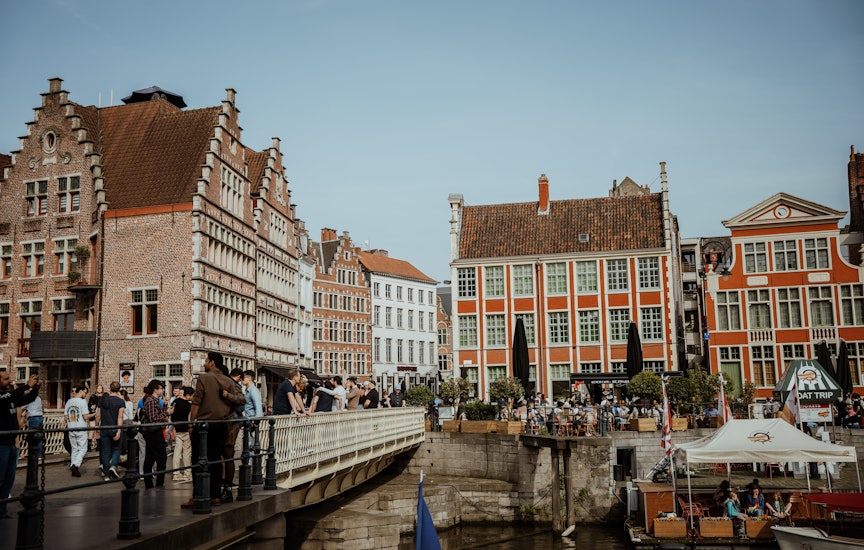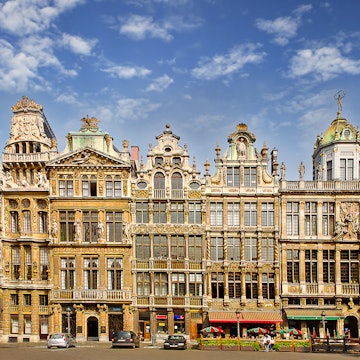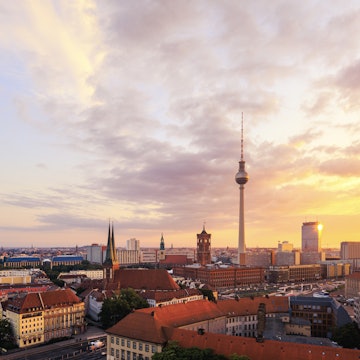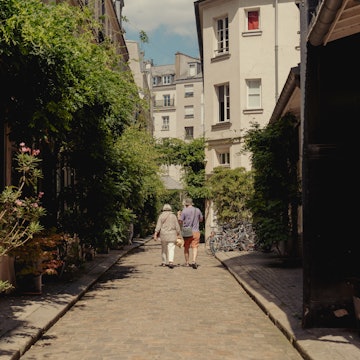
Explore more of Belgium in the historic southern city of Dinant

Jul 24, 2025 • 6 min read
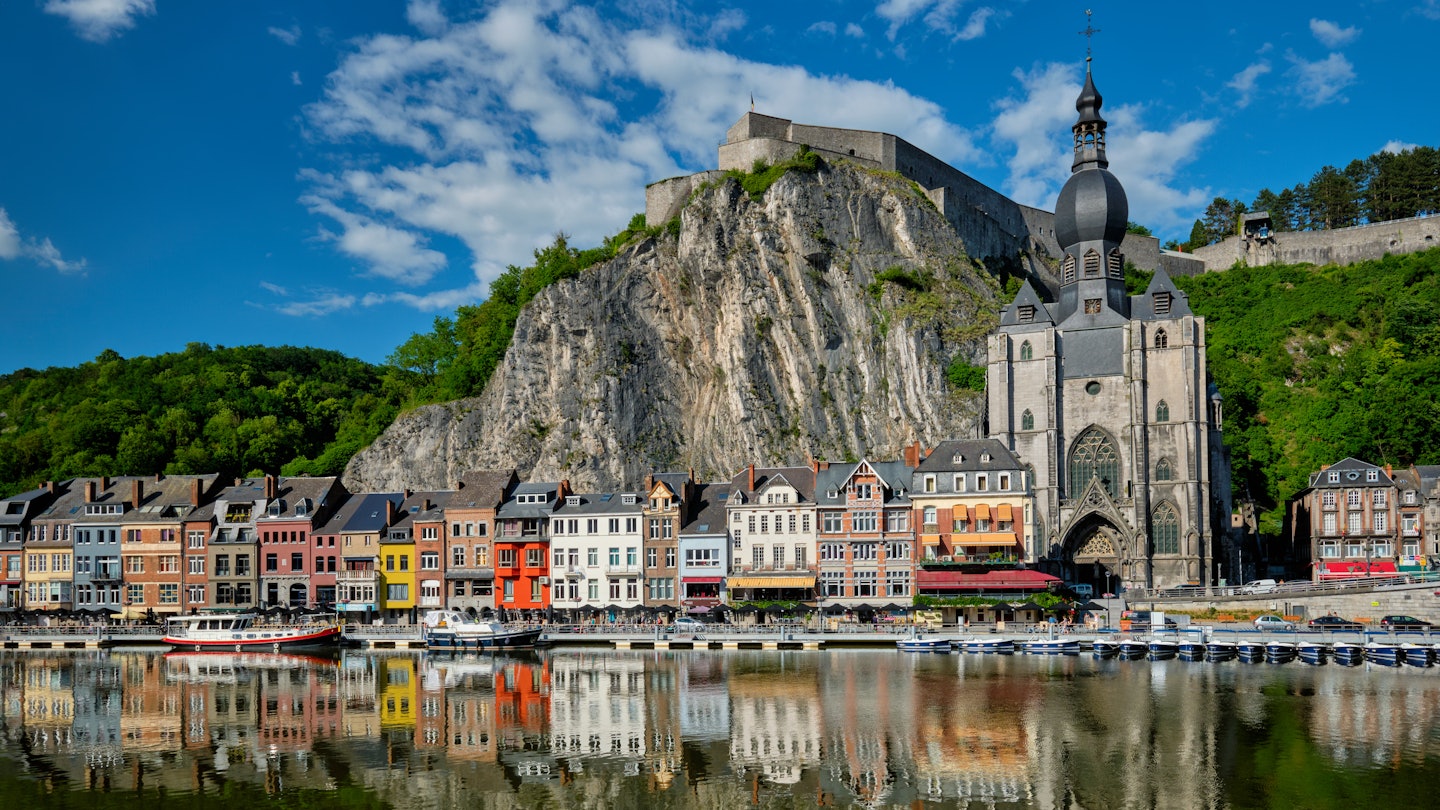
Dinant is one of Belgium's prettiest small cities. Dmitry Rukhlenko/Shutterstock
Sure, Bruges is a fairy-tale town with its centuries-old architecture, serene 13th-century Begijnhof and romantic atmosphere that makes it perfect for a cozy weekend break. And yes, Brussels dazzles with its gilded Grand Place and vibrant energy. But why not escape the crowds and head south in Belgium to a city that's just as attractive on a smaller scale?
Just a few kilometers from Namur and close to the French border, you'll find Dinant on the River Meuse. The city stretches along the riverbank beneath a towering wall of limestone cliffs. Behind this scenic setting lies a turbulent history: it was destroyed in 1466 by Charles the Bold, heir to the Duchy of Burgundy, and again in 1914, when German troops massacred 674 residents during the WWI. Yet Dinant rebuilt itself after each tragedy. The birthplace of Adolphe Sax, inventor of the saxophone, and the world-famous Leffe beer, this compact city has so much to offer.
Why visit Dinant now?
Dinant's riverside location beneath dramatic cliffs has drawn increasing numbers of tourists in recent years. In response, the city is offering new activities, accommodations and tourist facilities. It's a great idea to experience it before it becomes more crowded.
Pleasure boats docked along the Meuse River in Dinant. Getty Images/Flickr RF
Dinant’s best experiences
Ride the cable car up to the Citadelle
Perched on a cliff above Dinant, the Citadelle de Dinant was built in 1815 on the site of an 11th-century castle. Its strategic position made it a key defensive site through the centuries. To reach the top, take the cable car, or, if you're feeling really energetic, climb the 408 steps of the 1577-built stairway. Inside, the “Corridor of Time” traces Dinant’s history with the help of augmented reality tablets. Explore the elliptic courtyard and learn about garrison life during the “Dutch period” when the citadel was redesigned. A moving section, Espace 1914, is dedicated to WWI and the tragic Battle of Dinant in August 1914. All that, plus sweeping views over the Meuse valley, makes it well worth the climb.
Marvel at the Collégiale de Dinant
The Collégiale Notre-Dame de Dinant (Collegiate Church of Our Lady) is one of Dinant’s most striking landmarks, with its massive façade and onion-shaped tower. Originally built in the 13th century, it has suffered damage and undergone several renovations, the last major one taking place between 1919 and 1923. The church’s exterior blends Romanesque, Mosan Gothic (notably the portal and windows) and Baroque (the tower) elements. Inside, the building is narrower than expected, pressed against the cliff behind it, yet it feels light and spacious thanks to tall colonnades and colorful stained-glass windows. The most impressive of these is the large rose window by Gustave Ladon, made in 1902 in the 13th-century style and dedicated to the life of Mary – it’s one of the largest in Europe. You should also look for paintings by Dinant-born artist Antoine Wiertz, whose dramatic Romantic works can be found in museums across the country.
Visit Adolphe Sax’s House
Adolphe Sax is probably Dinant’s most famous citizen. He invented a device that would change the course of music history and now bears his name: the saxophone. And saxophones are everywhere here! It might be one of the first things you spot upon exiting the train station. Follow the Art on Sax trail across the Charles de Gaulle Bridge, itself decorated with customized saxophone sculptures, to the other bank of the Meuse. Pass the Collégiale and you’ll reach the house where Monsieur Sax was born. He’s there, sitting on a bench, as if listening to the sound of his own creation. The house has been transformed into an interpretation center, focusing not only on Sax’s life and inventive genius (he created more than just the saxophone) but especially on his iconic instrument. Though small, this free museum is packed with information, images and interactive displays where you can hear the various saxophone types.
Relax on the Croisette and cruise the River Meuse
Yes, just like Cannes, Dinant has its own "Croisette." The banks of the Meuse have been enlarged and transformed into a promenade lined with cafas and restaurants. Grab a drink (try the local “Croisette de Dinant” beer, a refreshing pale ale), have a meal at Le Cerf Vert and try one of Dinant’s local specialities, the flamiche (a savoury pie with cheese). Once your belly is full, it's time to take to the river for a short cruise. With Dinant Evasion, you can either join a 90-minute tour or, if you feel like playing skipper yourself, hire a boat to explore at your leisure. In addition to regular river trips, Les Croisières Mosanes offers fancier sunset and dinner cruises.
Get out into the Belgian countryside
At the gateway to the Ardennes, Dinant is surrounded by stunning nature and fairy-tale castles. Join a classic Belgian tradition: paddling down the Lesse river. Almost everyone local has tried it at least once! One starting point (Gendron) is just 15 minutes away by car. Dinant Evasion offers excursions, plus warm showers at the finish – a very welcome inclusion as getting soaked is part of the fun. Underground, the Merveilleuse cave lives up to its name, with elegant stalactites, stalagmites, and calcite formations spread over three levels. The Grand Hall, with its cascading formations, is particularly impressive. The region also boasts fine castles, like the Château de Freÿr, a former summer residence of the Beaufort-Spontin family. Overlooking the Meuse, the château remains almost untouched since the 18th century, with richly decorated rooms and history-packed interiors (Louis XIV once guested here). The symmetrical French-style gardens, inspired by Versailles, offer breathtaking views of the river and surrounding cliffs – perfect for a day trip from Dinant.

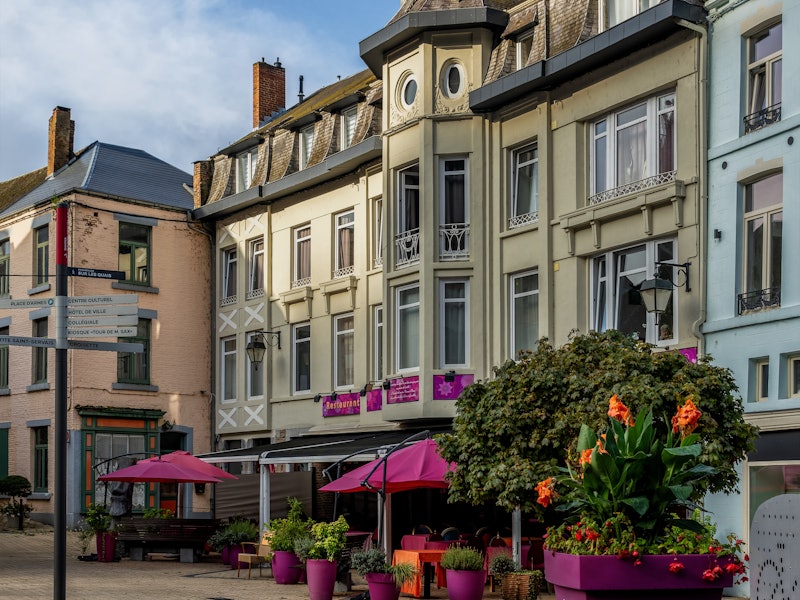
Where to stay in Dinant
Dinant is quite small and options are limited, so it might be a good idea to base yourself in nearby Namur and visit for the day. However, if you choose to stay in town, Dinant is very walkable and you’ll be close to all the main sights. Les Terrasses de Sax is a small B&B with stunning views over the Meuse, right in the center of Dinant. This former house and butcher shop was tastefully renovated by host Jean-Marc. We recommend treating yourself to the terrace room – the views are spectacular.
Otherwise, try La Merveilleuse by Infiniti Resort. It occupies a 19th-century former convent. The austere sleeping quarters of the nuns are long gone, replaced by stylish rooms (be sure to book in the convent building, as it also has a newer annex). The former chapel now houses Maison Leffe, an interpretation center dedicated to Leffe beer, which was originally brewed in the region.
Tip: Leffe beer is now produced in Leuven but has its origins at the active Abbaye de Notre Dame de Leffe at the northern end of Dinant. Other than for mass, or tours at 3pm on Saturdays, the abbey remains closed to ensure the monks' quiet religious contemplation. However, right opposite is the marvellously atmospheric restaurant Le Confessional, which serves Leffe with meals.
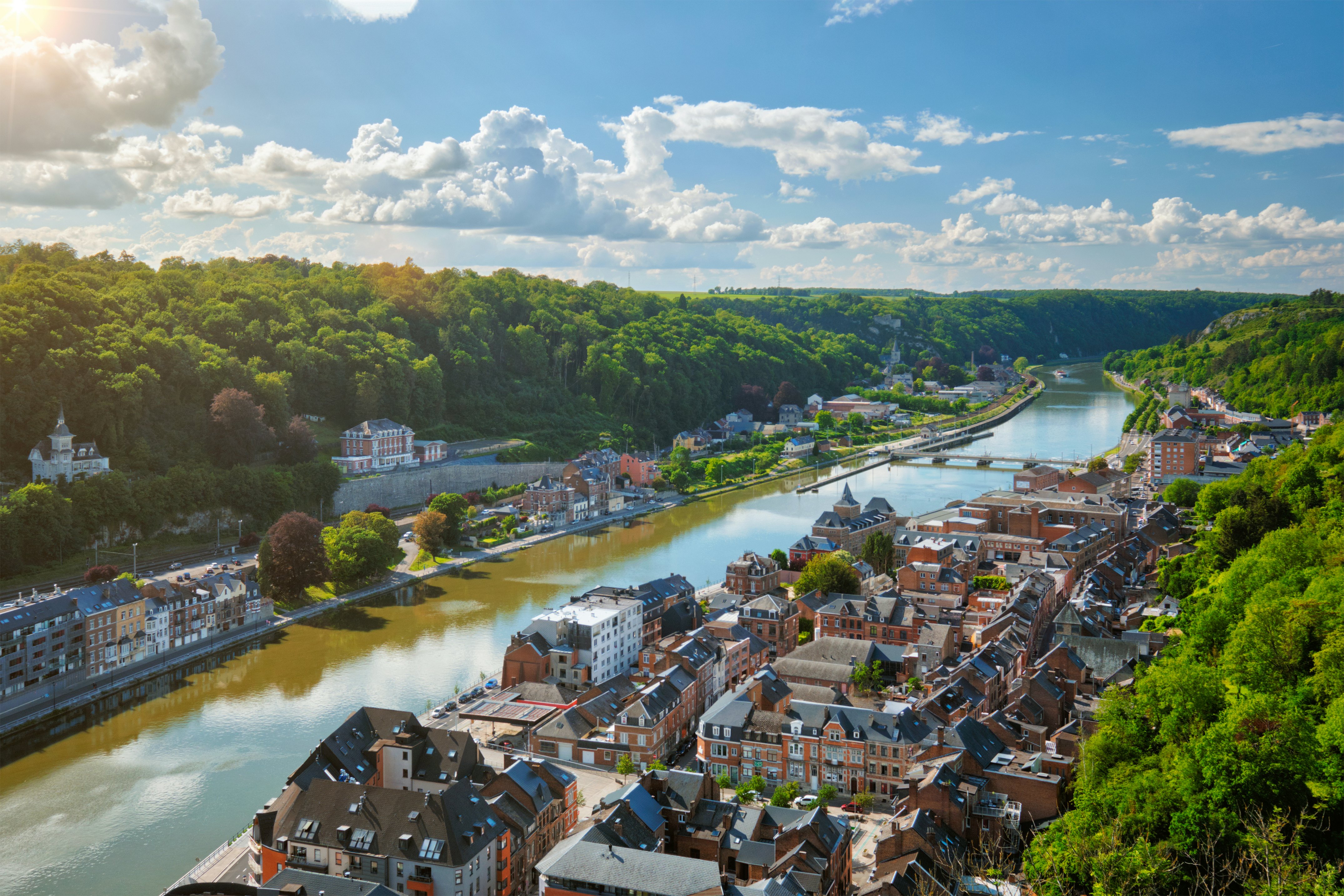
How to pair a visit to Bruges and Brussels with a visit to Dinant
Taking the SNCB/MIVB train is the easiest way to get around Belgium, and reaching Dinant is no exception. However, unlike most destinations accessible directly from Brussels’ main stations (Nord, Central and Midi), there are no direct trains to Dinant from these hubs. Instead, you’ll need to depart from Bruxelles-Luxembourg station and take a train toward Namur, continuing on to Dinant (the final stop on the line).
Coming from Bruges? You’ll need to change trains twice: once at Bruxelles-Midi, then again at Bruxelles-Luxembourg.
If your route to Dinant includes one or several connections, you don’t need a separate ticket – the full journey is included in the fare: €15.80 (US$18.50) one-way from Brussels (1½ hours) or €26 (US$30) from Bruges (3 hours). No advanced purchase required.
Planning a weekend trip? Return tickets are 50% off starting at 7pm on Fridays, valid for travel back to your original departure point.








